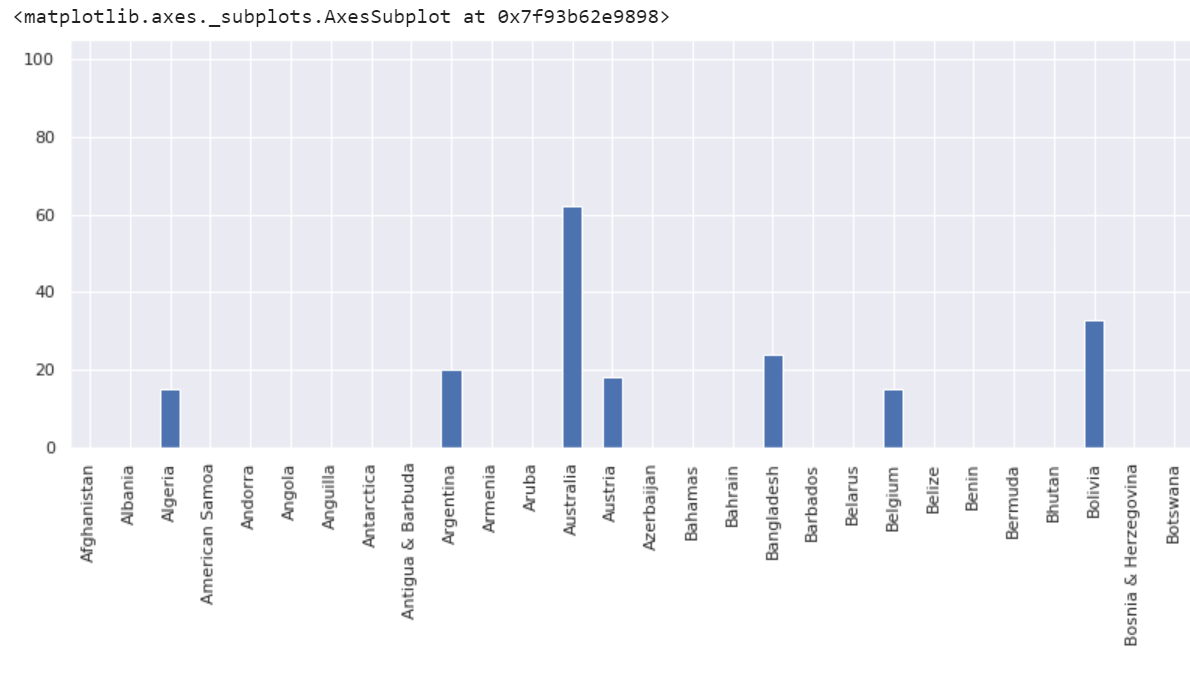Read Data From Google Trends Into Java
Google Trends API for Python
In this tutorial, I will demonstrate how to use the Google Trends API for getting the current trending topics on the cyberspace.
![]()

Introduction
Google trends is a website that analyzes and lists the popular search results on Google search based on diverse regions and languages. Google Trends is Google'due south website (obviously). With the help of this tutorial, you lot can go the trending results (and many more than) from Google trends website using Python. You lot don't demand to manually search and re-create the trending results, the Python API called pytrends does the job for y'all. Before getting started, I desire all of you lot guys to get through the official documentation of the pytrends API.
Before gett i ng started the whole code for this tutorial is available on my GitHub Repository which is given beneath. Please feel free to explore.
Installation
The commencement step is to install the library manually. And then, open your favorite IDE or notebook start typing the following code. I will use Google Colab because it'due south my favorite notebook.
If you are using jupyter notebook, merely blazon the code equally it is (make sure you have '!' at the outset)
!pip install pytrends Or, if you are using an IDE, just blazon the following code
pip install pytrends After executing the in a higher place code you should get a successful bulletin as shown below:

Implementation
Connecting to Google
You must connect to Google kickoff because, after all, we are requesting the Google trending topics from Google Trends. For this, we need to import the method chosen TrendReq from pytrends.request library. Too, I will import the pandas library to shop and visualize the information, which you meet in the later tutorial.
import pandas as pd
from pytrends.request import TrendReq pytrend = TrendReq()
Interest By Region
Let us see the terms which are pop in the region worldwide. I will choose, the term to be searched as " Taylor Swift " (I like her so….).
pytrend.build_payload(kw_list=['Taylor Swift']) # Interest by Region
df = pytrend.interest_by_region()
df.head(10)

At present y'all might be thinking what are the values, what exercise they denote? The values are calculated on a scale from 0 to 100, where 100 is the location with the most popularity as a fraction of total searches in that location, a value of 50 indicates a location which is half equally pop. A value of 0 indicates a location where there was not enough information for this term. Source →Google Trends.
Let us plot the result on a bar graph considering sometimes visual representation gives a clear picture show.
df.reset_index().plot(10='geoName', y='Taylor Swift', figsize=(120, x), kind ='bar') 
Likewise, you lot apply the parameter resolution = 'COUNTRY_NAME' to filter the results.
Daily Search Trends
Now let usa become the top daily search trends worldwide. To do this we have to use the trending_searches() method. If you want to search worldwide but don't laissez passer any parameter.
# Get Google Hot Trends data
df = pytrend.trending_searches(pn='united_states')
df.caput() 
Brand certain you lot enter the state proper noun in lowercase pn = "canada" . As well, you lot can compare the above results with the google trend's result. To go today'south trending topics simply utilise:
df = pytrend.today_searches(pn='US') Top Charts
Let was encounter what was trending in 2019. With the help of top_charts method we tin get the top trending searches yearly.
# Go Google Top Charts
df = pytrend.top_charts(2019, hl='en-US', tz=300, geo='GLOBAL')
df.head() 
To compare the results just visit Google Trends. We can specify the twelvemonth and the state that we desire to see the trending searches.
Google Keyword Suggestions
Let u.s.a. see how can we obtain google's keyword proffer. If you don't know what I'm talking almost. The beneath prototype explains things more clear.

# Get Google Keyword Suggestions keywords = pytrend.suggestions(keyword='Mercedes Benz')
df = pd.DataFrame(keywords)
df.drop(columns= 'mid') # This cavalcade makes no sense

Related Queries
It'due south a mutual thing that when a user searches for a topic, they would as well search for something related. These are called related queries. Let us see what are the related queries for the topic " Coronavirus ". Always remember when you want to alter the topic proper name only run the following code over again with the new proper name every bit the parameter.
pytrend.build_payload(kw_list=['Coronavirus']) Now allow's run the method related_queries which returns a dictionary full of related queries for the topic " Coronavirus "
# Related Queries, returns a dictionary of dataframes related_queries = pytrend.related_queries()
related_queries.values()

Similarly, y'all can besides search for the related topics just run the beneath code to practise and so:
# Related Topics, returns a dictionary of dataframes related_topic = pytrend.related_topics()
related_topic.values()
This is the terminate of the tutorial, I hope you guys have learned a thing or two. If you guys have whatsoever doubts regarding the tutorial let me know via the comment department. Although this is a brusque tutorial at that place is a lot to acquire. Alright see y'all in my adjacent tutorial, take a practiced day!!!
Source: https://towardsdatascience.com/google-trends-api-for-python-a84bc25db88f



Post a Comment for "Read Data From Google Trends Into Java"